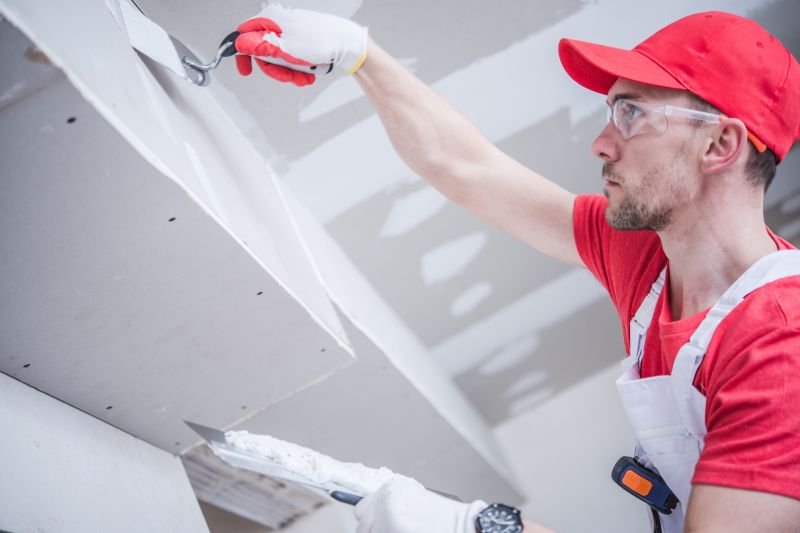Ultimate Guide To Drywall Patchings Products For Home Repairs
Find out which drywall patching products deliver reliable performance and easy application for quick, quality fixes.
 When it comes to repairing drywall, selecting the right products for patching can make a significant difference in achieving a seamless finish. Drywall patching products come in various forms, each designed to address specific types of damage, such as small holes, large gouges, or cracks. Using the appropriate materials ensures that repairs are durable and blend smoothly with the existing wall surface. Many products are formulated to be easy to apply, quick-drying, and capable of providing a professional-looking result even for DIY enthusiasts.
When it comes to repairing drywall, selecting the right products for patching can make a significant difference in achieving a seamless finish. Drywall patching products come in various forms, each designed to address specific types of damage, such as small holes, large gouges, or cracks. Using the appropriate materials ensures that repairs are durable and blend smoothly with the existing wall surface. Many products are formulated to be easy to apply, quick-drying, and capable of providing a professional-looking result even for DIY enthusiasts.
Top Overall Option
Multi-Purpose Drywall Repair Compound
A versatile drywall repair compound designed for a wide range of patching needs, offering smooth application and good adhesion. It is suitable for small to medium repairs and can be sanded easily once dried, providing a seamless finish for walls and ceilings.
Types of Products For Drywall Patchings
Pre-mixed Joint Compound
Ready-to-use compound ideal for filling and finishing drywall seams and small repairs.
Powdered Joint Compound
Dry mix that requires water to prepare, suitable for larger repairs and professional applications.
Drywall Patch Kits
All-in-one kits containing patches, compounds, and tools for quick repairs of holes and cracks.
Fiberglass Mesh Patches
Flexible patches used to reinforce repairs over cracks or holes, providing added durability.
Self-Adhesive Wall Patches
Pre-cut patches with adhesive backing for easy application on small holes.
Joint Tape
Paper or mesh tape used to reinforce joints and seams before applying compound.
Sandable Texture Compound
Specialized compound for blending patches with existing wall textures.
Epoxy Putty
Two-part putty for filling larger holes and structural damage, providing a strong bond.
Lightweight Spackle
Thin, easy-to-apply spackle suitable for small repairs and touch-ups.
Heavy-Duty Patching Compound
Thicker formulations designed for larger or more challenging repairs requiring extra strength.
Quick-Dry Patch Compound
Fast-curing compounds ideal for urgent repairs or projects with tight timelines.
Ceiling Repair Patches
Specialized patches designed specifically for ceiling drywall repairs.
Flexible Repair Patches
Patches that bend and move with the wall, reducing cracking over time.
Textured Patch Repair
Products formulated to match or replicate wall textures after patching.
Corner Patches
Reinforced patches designed specifically for wall corners and edges.
Popular Choices
A commonly used product for finishing drywall seams and small repairs, appreciated for convenience.
Widely used for reinforcing repairs over holes and cracks, offering durability.
Popular for quick fixes on small holes, easy to apply without additional tools.
Favored for minor touch-ups and small repairs due to ease of use.
Essential for reinforcing drywall joints and preventing future cracking.
Preferred for filling larger holes requiring a strong, durable bond.
Ideal for fast repairs, especially when time is limited.
Used to match wall textures after patching, popular among DIYers.
Commonly selected for repairing or reinforcing wall corners and edges.
Frequently chosen for ceiling drywall repairs due to their specialized design.
Trending for their ability to move with the wall and reduce cracking.
The process of patching drywall typically involves preparing the damaged area, applying the patching material, and then finishing with sanding and painting. The choice of patching products can influence the ease and effectiveness of each step. For example, some patch compounds are lightweight and easy to spread, while others are formulated to adhere firmly to the drywall surface and resist cracking over time. Proper selection and application of these products can help prevent future damage and maintain the integrity of the wall.
In addition to traditional spackle and joint compound, there are specialized patch kits that include all necessary components for specific repairs. These kits often contain mesh or fiberglass patches, patching compounds, and finishing tools, making them convenient options for quick repairs. For larger holes or structural damage, more robust patching solutions such as drywall repair patches or even replacement panels may be required. Understanding the different types of products and their intended uses can help ensure successful drywall repairs.
Whether you're a homeowner tackling minor repairs or a professional contractor handling extensive renovations, having the right drywall patching products on hand is essential. Properly chosen materials can save time, reduce mess, and improve the overall quality of the repair. Investing in versatile and reliable patching solutions can make drywall maintenance more straightforward and results more satisfying.
Key Buying Considerations
- Type of damage to be repaired (small hole, large crack, structural damage).
- Ease of application and whether the product is pre-mixed or requires mixing.
- Drying time and whether quick-drying options are necessary for your schedule.
- Adhesion properties and whether the product bonds well to drywall surfaces.
- Compatibility with wall textures and whether texture matching is needed.
- Flexibility of the patching material to prevent future cracking.
- Size and coverage area of the product to ensure it meets your repair needs.
- Ease of sanding and finishing for a smooth final appearance.
- Durability and resistance to future damage or cracking.
- Availability of repair kits that include all necessary tools and materials.
- Compatibility with ceilings if repairs are needed overhead.
- Type of patch (mesh, self-adhesive, epoxy) suited for the specific repair.
- Cost-effectiveness and whether the product provides good value for the quality.
- Brand reputation and user reviews for reliability and performance.
- Environmental conditions, such as humidity, that may affect drying and adhesion.
